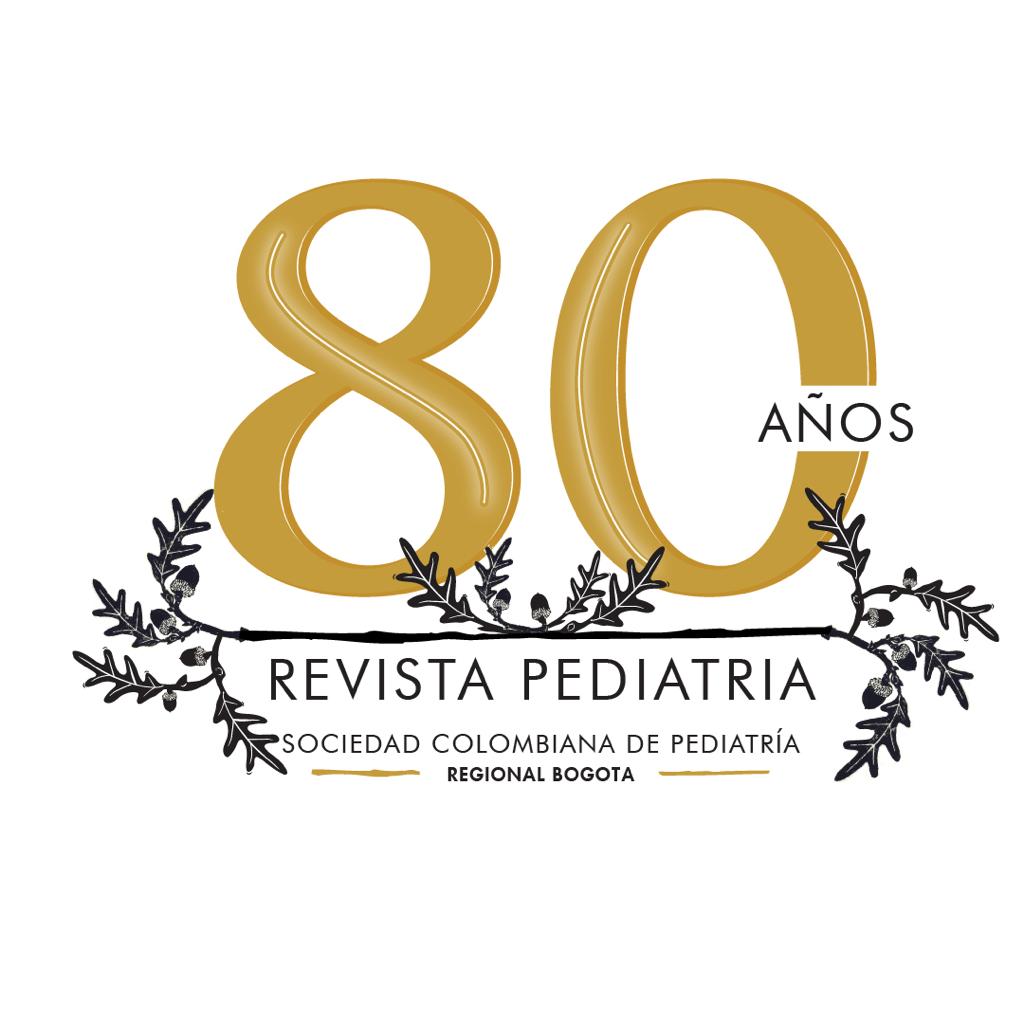Clinical findings associated with normal echocardiographic results in newborns hospitalized in a high-altitude center.
Main Article Content
Abstract
Introduction: Congenital heart defects occur in 4 to 10 per 1000 live births and represent about 10 % of infant deaths. Currently, few clinical findings suggest an abnormal echocardiogram, so screening tests such as pulse oximetry are used, but there are doubts about their accuracy in high-altitude cities. Objective: To determine the relationship between the clinical findings of newborns hospitalized in a high-altitude unit and their echocardiographic findings. Methods: Cross-sectional historical study. Patients under 28 days of age underwent an echocardiogram as part of the diagnostic approach between May 2017 and January 2020. Clinical variables were compared with echocardiographic findings using bivariate and logistic regression. Results: 849 patients with a median age of 4 days and 36 weeks of gestational age were included. Five newborns (0.6 %) showed heart disease with critical defects, 25.2 % had non-critical defects (74.9 % had patent ductus arteriosus greater than 2mm, 13.2 % atrial septal defect greater than 5mm, and 11.7 % pulmonary hypertension), and in 74.4 % it was normal. When performing the multivariate model, having ≤7 days of life (OR 2.1, 95 % CI [1.22-3.34]), FiO2 >35 % (OR 2.02, 95 % CI [1.42-2.86]), heart murmur (OR 3.34, 95 % CI [2.01-5.57]), associated malformation (OR 2.35 95 % CI [1.54-3.58]), feeding difficulties (OR 1.57, 95 % CI [1.07-2.31]) and abnormal chest X-ray (OR 1.54, 95 % CI [1.04-2.31]), behaved as independently associated factors for the presence of an abnormal echocardiogram. Conclusions: This study detected some findings associated with normal echocardiograms that could help create a predictive model for patients at high altitudes to improve the performance of screening tests developed at sea level.
Downloads
Article Details

This work is licensed under a Creative Commons Attribution-NonCommercial-NoDerivatives 4.0 International License.
Creative Commons
License Attribution-NonCommercial-ShareAlike 4.0 International (CC BY-NC-SA 4.0)
You are free to:
Share - copy and redistribute the material in any medium or format.
Adapt - remix, transform, and build upon the material The licensor cannot revoke these freedoms as long as you follow the license terms.
• Attribution — You must give appropriate credit, provide a link to the license, and indicate if changes were made. You may do so in any reasonable manner, but not in any way that suggests the licensor endorses you or your use.
• NonCommercial — You may not use the material for commercial purposes.
• ShareAlike — If you remix, transform, or build upon the material, you must distribute your contributions under the same license as the original.
• No additional restrictions — You may not apply legal terms or technological measures that legally restrict others from doing anything the license permits.
References
Plana MN, Zamora J, Suresh G, Fernandez-Pineda L, Thangaratinam S, Ewer AK. Pulse oximetry screening for critical congenital heart defects. Cochrane Database Syst Rev. 2018;3:CD011912. DOI: https://doi.org/10.1002/14651858.CD011912.pub2
Rodriguez L. Indicaciones de ecocardiografía en el paciente pediátrico. In Procedimientos en cardiología. Hospital de Cabueñes. Gijón-Asturias-España;2003.
Van Naarden Braun KR, Grazel R, Koppel S, Lakshminrusimha J, Lohr P, Kumar B, Govindaswami M et al. Evaluation of critical congenital heart defects screening using pulse oximetry in the neonatal intensive care unit. J Perinatol. 2017; 37: 1117-1123. DOI: https://doi.org/10.1038/jp.2017.105
Mertens LI, Seri J, Marek R, Arlettaz P, Barker P, McNamara AJ, Moon-Grady PD et al. Targeted Neonatal Echocardiography in the Neonatal Intensive Care Unit: practice guidelines and recommendations for training. Writing Group of the American Society of Echocardiography (ASE) in collaboration with the European Association of Echocardiography (EAE) and the Association for European Pediatric Cardiologists (AEPC). J Am Soc Echocardiogr. 2011; 24: 1057-78. DOI: https://doi.org/10.1093/ejechocard/jer181
Paranka MS, Brown JM, White RD, Park MV, Kelleher AS, Clark RH. The impact of altitude on screening for critical congenital heart disease. J Perinatol. 2018; 38: 530-536. DOI: https://doi.org/10.1038/s41372-018-0043-9
Britton JR. Altitude, oxygen and the definition of bronchopulmonary dysplasia. J Perinatol. 2012; 32: 880-5. DOI: https://doi.org/10.1038/jp.2012.6
Ortega-Calvo M, Cayuela-Domínguez A. Regresión logística no condicionada y tamaño de muestra: una revisión bibliográfica. Revista Española de Salud Pública. 2002; 76: 85-93. DOI: https://doi.org/10.1590/S1135-57272002000200002
Thangaratinam S, Brown K, Zamora J, Khan KS, Ewer AK. Pulse oximetry screening for critical congenital heart defects in asymptomatic newborn babies: a systematic review and meta-analysis. Lancet. 2012; 379: 2459-2464. DOI: https://doi.org/10.1016/S0140-6736(12)60107-X
Riede FT, Wörner C, Dähnert I, Möckel A, Kostelka M, Schneider P. Effectiveness of neonatal pulse oximetry screening for detection of critical congenital heart disease in daily clinical routine--results from a prospective multicenter study. Eur J Pediatr. 2010; 169: 975-81. DOI: https://doi.org/10.1007/s00431-010-1160-4
Tin W, Lal M. Principles of pulse oximetry and its clinical application in neonatal medicine. Semin Fetal Neonatal Med. 2015; 20: 192-7. DOI: https://doi.org/10.1016/j.siny.2015.01.006
Troncoso GA, Fonseca A, Domínguez MT, Sandoval NF, Taborda A, Aranguren HC, et al. Altitude at Birth on Critical Congenital Heart Disease Screening Through Pulse Oximetry in Newborns in Colombia - A Validation by Experts. Glob J of Ped & Neonatol Car. 2(4): 2020. GJPNC.MS.ID.000543. DOI: https://doi.org/10.33552/GJPNC.2020.02.000540
Li JJ, Y Liu SY, Xie GD, Zhao T, Dai H, Chen L, F Mu et al. Newborn screening for congenital heart disease using echocardiography and follow-up at high altitude in China. Int J Cardiol, 2019; 274: 106-112. DOI: https://doi.org/10.1016/j.ijcard.2018.08.102
Kannan, B. R. Clinical Diagnostic Approach to Congenital Acyanotic Congenital Heart Disease in Infants and Children. Indian J Pediatr. 2020; 87: 381-384. DOI: https://doi.org/10.1007/s12098-020-03251-w
Kang G, H Zhang. Significance of cardiac murmurs in detection of congenital heart disease. Cardiol Young. 2019; 29: 1317-1318. DOI: https://doi.org/10.1017/S1047951119002038
Dilli DV, Doğan BM, Özyurt A, Özyurt N, Hakan S, Bozabalı İ, Caner H et al. Should we start a nationwide screening program for critical congenital heart disease in Turkey? A pilot study on four centers with different altitudes. Cardiol Young. 2019;29: 475-480. DOI: https://doi.org/10.1017/S1047951119000052





